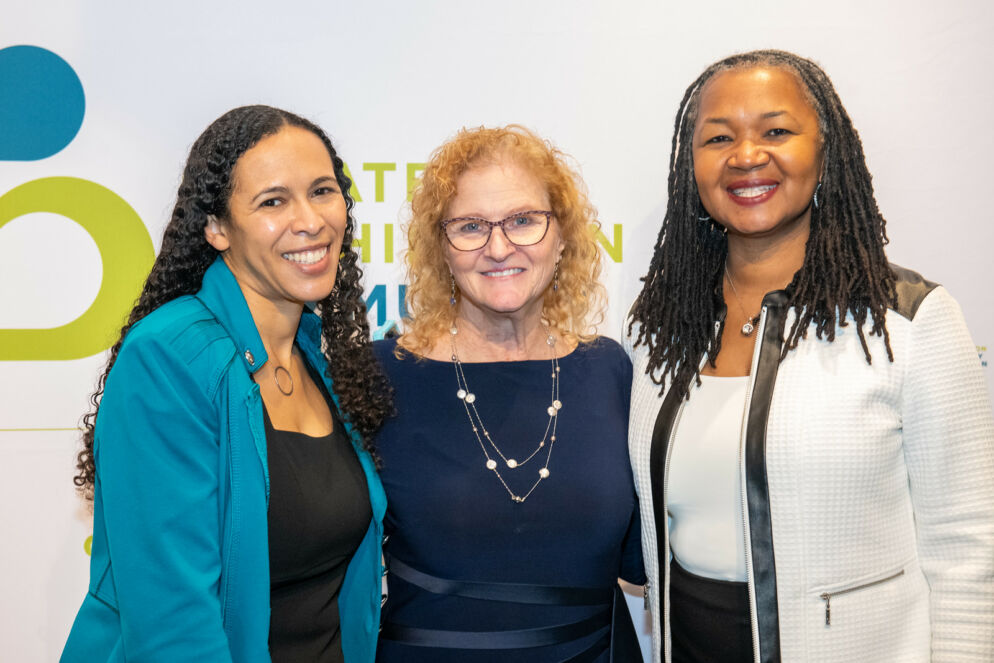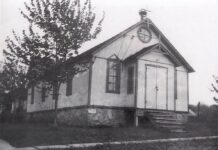
Mimi Brodsky Kress, the 2022 Montgomery County Philanthropist of the Year, and Tonia Wellons, president and CEO of the Greater Washington Community Foundation. Photo credit: James Pleasant.
For more than 50 years, the Greater Washington D.C. Community Foundation has advised thousands of individuals, families and businesses seeking to make a meaningful difference in Montgomery County and beyond.
The Community Foundation, which has granted $1.7 billion since 1973, serves as a link between donors and impactful nonprofits in need of resources.
As a tax-exempt public charity, the Community Foundation works with donors through all types of giving vehicles.
“They can support their favorite causes here, which are all eligible 501(c)(3) organizations,” says Anna Hargrave, the Community Foundation’s executive director for Montgomery County. “We help people craft and steward their philanthropic legacies so they can pool their resources and make a deeper impact than anyone could do alone.”
Hargrave and other foundation professionals work with donors who are based in the county to help them with their giving here and globally. She also takes the lead “on any of our initiatives that are focused on driving change here in Montgomery County.”
The Community Foundation understands the challenges, the neighborhoods most impacted and the nonprofits that serve on the front lines, she says.
To those interested in giving to charity, the Community Foundation asks them to take a step back and think about what they’re trying to accomplish. “We have a series of questions we pose to them. There is a process in determining what and how much they give. Everybody has their own path,” Hargrave says.
The strategic-giving professionals at the Community Foundation “will work with donors to make the giving process easy, tax-smart and deeply rewarding,” she says.
The IRS offers tax deductions for any donations made to charities over the tax year. Generally, individuals can deduct up to 60% of their adjusted gross income in charitable donations to 501(c)(3) nonprofits.
“They have a wealth adviser that helps them assess their finances and figure out how much they can give,” Hargrave says. “Some come to us because their advisers know they need a tax-smart giving vehicle. Including them, we do have a lot of people who also contact us because they are here to learn, and they want to figure out their philanthropic passions and how they can make a deeper impact.”
“We start by listening,” Hargrave says, “understanding what touches their hearts, what issues are meaningful, and from there about what impact means to them.”
Gifts to the Community Foundation benefit the community forever — philanthropy in its broadest sense, she says. “We would like to introduce them to many organizations in our county and region that are doing great work. So that way they can figure out which ones are best aligned with their values and vision.”
College Tracks is an example of an impactful organization that is a grant recipient in Montgomery County. The mission of the Silver Spring-based organization is to empower first-generation college students and students from low-income and immigrant households in Montgomery County to reach their education goals.
“More and more donors in our community have become volunteers and board members at College Tracks. The organization is in five schools serving thousands of students and helping them on their pathway to college,” Hargrave says. “This is in part due to the funding from the Community Foundation.”
The most popular giving vehicle is the donor-advised fund because it allows donors the flexibility to support all their favorite charities here, across the country, and around the world, Hargrave says.
“We’ve had others who’ve had a major wealth event, like the sale of a company or a big inheritance. A tax adviser suggests that it’s the perfect time to start or add to a donor-advised fund. That way they can fuel all their favorite causes.”
Donors can also further customize their giving through more targeted giving vehicles, such as scholarships and designated funds.
“We really try to customize them and match up the vehicle to the goals and the vision the donor has. We always look throughout the community, listen to what the needs are and then think strategically about how the grant from the donor’s fund could be truly game-changing for the organizations throughout the county,” Hargrave says.
“We have some donors who prefer to be anonymous so we serve as their eyes and ears to gather information and see how the organizations are doing and see if they are encountering challenges that might warrant additional support or different kinds of support if the donors need to make a shift.”
Many donors involve their family in their giving.
“They want to pass on the spirit of generosity to their children and will involve them in identifying organizations, getting involved, volunteering; how they can leverage not just their money, but their time and talent to really help those organizations get to the next level.”
On their own, donors get “paralysis by possibility,” Hargrave says. “Often people care about an issue. They do one Google search and find themselves completely overwhelmed. The beauty of working with the Community Foundation is they have a team. They’re not alone. There’s somebody who cares about their local community and cares about them, who can sit down to spend the time to help them identify their priorities, figure out the difference they want to make and help connect them to amazing local organizations.”




